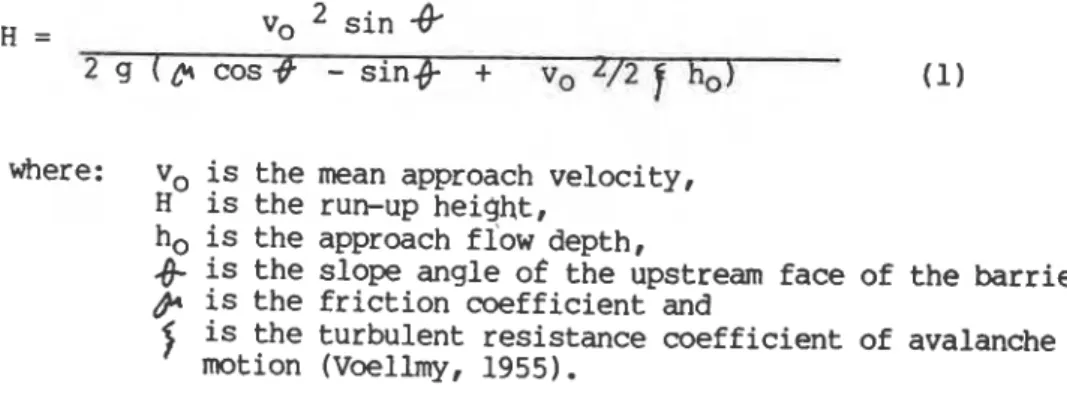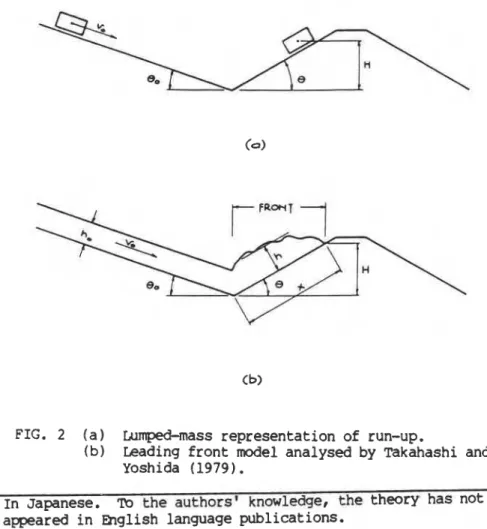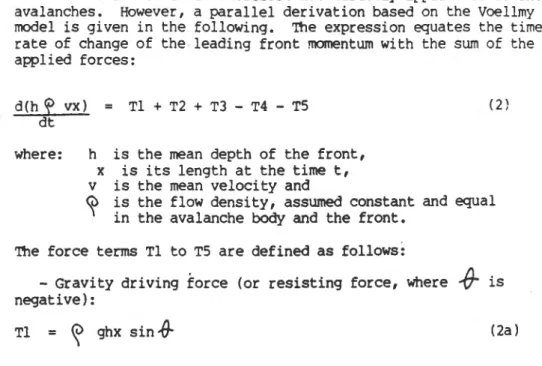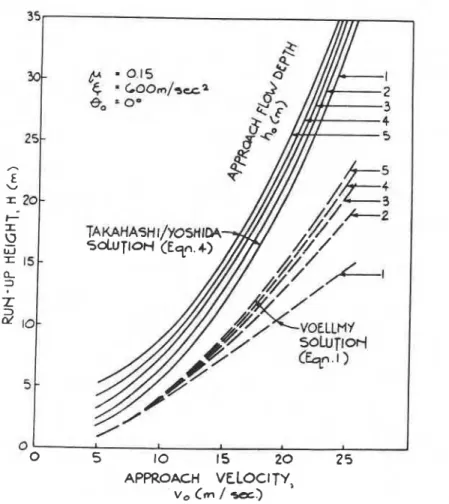Publisher’s version / Version de l'éditeur:
Vous avez des questions? Nous pouvons vous aider. Pour communiquer directement avec un auteur, consultez la première page de la revue dans laquelle son article a été publié afin de trouver ses coordonnées. Si vous n’arrivez pas à les repérer, communiquez avec nous à PublicationsArchive-ArchivesPublications@nrc-cnrc.gc.ca.
Questions? Contact the NRC Publications Archive team at
PublicationsArchive-ArchivesPublications@nrc-cnrc.gc.ca. If you wish to email the authors directly, please see the first page of the publication for their contact information.
https://publications-cnrc.canada.ca/fra/droits
L’accès à ce site Web et l’utilisation de son contenu sont assujettis aux conditions présentées dans le site
LISEZ CES CONDITIONS ATTENTIVEMENT AVANT D’UTILISER CE SITE WEB. IAHS Publication, 162, pp. 605-612, 1987
READ THESE TERMS AND CONDITIONS CAREFULLY BEFORE USING THIS WEBSITE.
https://nrc-publications.canada.ca/eng/copyright
NRC Publications Archive Record / Notice des Archives des publications du CNRC :
https://nrc-publications.canada.ca/eng/view/object/?id=ad86ab6f-0e8a-47e9-9ab4-0d4d3079b84c https://publications-cnrc.canada.ca/fra/voir/objet/?id=ad86ab6f-0e8a-47e9-9ab4-0d4d3079b84c
NRC Publications Archive
Archives des publications du CNRC
This publication could be one of several versions: author’s original, accepted manuscript or the publisher’s version. / La version de cette publication peut être l’une des suivantes : la version prépublication de l’auteur, la version acceptée du manuscrit ou la version de l’éditeur.
Access and use of this website and the material on it are subject to the Terms and Conditions set forth at
An Equation for calculating snow avalanche run-up against barriers
Hungr, O.; McClung, D. M.
S e r
TH1 National Research Conseil national
N21d Council Canada de recherches Canada
no. 1543
c. 2 Institute for lnstitut de BLDG Research in recherche en - ---A Construction construction
An Equation for Calculating
-
Snow Avalanche Run-up
Against Barriers
by
0.
Hungr and D.M. McClungANALYZED
Appeared in
Avalanche Formation, Movement and Effects
(Proceedings of the Davos Symposium, September 1986) IAHS Publication No. 162, 1987
p. 605-612
(IRC Paper No. 1543)
Reprinted with permission
NRCC 29067
i
B I B L I O T H ~ Q U EI R C
I
2T h t s p a p e r i s b e i n g d i s t r i b u t e d i n r e p r i n t f o r m by t h e I n s t i t u t e f o r R e s e a r c h i n C o n s t r u c t i o n . A List of b u i l d i n g p r a c t i c e and r e s e a r c h p u b l i c a t i o n s a v a i l a b l e from t h e I n s t i t u t e may be o b t a i n e d by w r i t i n g t o t h e P u b l i c a t i o n s S e c t i o n , I n s t i t u t e f o r R e s e a r c h i n C o n s t r u c t i o n , N a t i o n a l R e s e a r c h C o u n c i l o f C a n a d a . O t t a w a . O n t a r i o . Ce document e s t d i s t r i b u 6 s o u s forme de t ir6-A-part p a r 1' I n s t i t u t de r e c h e r c h e e n c o n s t r u c t i o n . On p e u t o b t e n i r une l i s t e d e s p u b l i c a t i o n s d e 1 ' I n s t i t u t porr-,ant s u r l e s tF - d e 7 pub1 c o n recl K1A - - --- - - -
Avolonchc F o d n , M o v a ~ u and Effeas(Proceedings of
September 1986). I A H S Publ. no. 162,1987. the Davos Symposium,
An equation for calculating snow avalanche run-up against barriers
0. I-IUNGK
7'hurbrr Com~iltan~s Ltd, 200 - 1445 West Georgia Sweet, Vanco~rver, BC, Canada V b c 2T3
D. M. McCLUNG
National Research Council of Canada, 3650 Wesbrook Mall, Vanco~rver, BC, Canada V6S 2L2
ABSTRACT The well known Voellmy runout equation is routinely used to dimension protective barriers for snow avalanches. Takahashi and Yoshida (1979) derived an alternative runout equation for debris flows, which accounts for transfer of momentum and thrust between the main body of the debris wave and the frontal part which moves into the runout zone. This paper shows that their equation can be easily adapted to snow avalanches within the context of the Voellmy model. The adaptation is especially unambiguous when applied to the calculation of run-up; i.e. runout on a steep adverse slope. A numerical comparison indicates that the Voellmy equation underestimates run-up by at least 50% compared to the proposed method.
Une hation pour calculer la hauteur d'avan& des avalanches sur le front des barrages protectifs
RESUME ~'6quat i on de distance d 'avancee d 'aprss Voellmy est souvent utilise pour dimensiomer le hauteur des barrages protectifs contre les avalanches. Takahashi et Yoshida (1979) ont d6rivG une &quation alternative pour les coulees de boue. Cette +ation tient mmpte du transfert d'impulsion et la puss& 6ntre la partie principale de la masse mouvante des d&ris et la partie frontale qui monte la pente de la barrage. Cette +ation a 6te adaptee pour les probl8mes des avalanches, dans le contexte du modale dynamique de Voellmy. On peut d6montrer que le hauteur evaluk par la theorie de Takahashi et Yoshida est 50% plus grande que celle calculee par 116quation de Voellmy
.
INTRODUCTION
Barriers, usually in the form of earth embankments, are sometimes used to shorten the runout distance of snow avalanches (Fig 1). Their height should exceed the expected run-up of the design avalanche front, H. The standard method of estimating the run-up height (e.g
.
Mears, 1981) utilizes an equation derived fromlumped-mass energy balance, due originally to Voellmy (1955):
H = vo 2 sin
-&
2 g ( 0 cos+ -sin#
+
vo L / 2 f ho) (1) where:vo
is the mean approach velocity,H is the run-up height, ho is the approach flow depth,
.&
is the slope angle of the upstream face of the barrier,& is the friction coefficient and
is the turbulent resistance coefficient of avalanche
'
motion (Voellmy, 1955).Equation (1) is based on the assumption that the kinetic energy of the avalanche mass, moving at velocity
vo,
is converted into potential energy corresponding to the run-up height, H, afterFIG. 1 An avalanche barrier in Rogers Pass, Selkirk
Mountains, British Columbia. (Photo courtesy
Equation for snow avalanche run-up against bnniers 607
subtracting work done against the frictional and turbulent resisting forces. It is implicitly assumed that the entire mass of the avalanche is being raised to the height H, as shown schematically in Fig. 2a. This is an obvious idealization. In reality, a large part of the avalanche mass remains behind the barrier and only the leading front is driven upwards, as shown in Fig. 2b. Momentum, as well as thrust force, are transferred from the main body of the avalanche into the leading front, increasing the run-up height. As shown in the following section, the
mechanics of this process can be simulated by a relatively simple mathematical procedure.
-THE RUNOUT EQUATION OF TAKAHASHI AND YOSHIDA
Takahashi and Yoshida (1979)* derived a momentum equilibrium equation which describes the run-up process illustrated in
FIG. 2 (a) Lumped-mass representation of run-up.
(b) Leading front model analysed by Takahashi and Yoshida (1979)
.
In Japanese. TO the authors1 knowledge, the theory' has not yet appeared in English language publications.
Fig. 2b. Their derivation was intended for a special kind of coarse.grained debris flow and was carried out in terms of
effective stress. It is therefore not directly applicable to snow avalanches. However, a parallel derivation based on the Voellmy model is given in the following. The expression equates the time rate of change of the leading front m n t u m with the sum of the applied forces:
where: h is the mean depth of the front,
x
is its length at the time t,v
is the mean velocity andis the flow density, assumed constant and equal in the avalanche body and the front.
m e force terms T1 to T5 are defined as follows:
-
Gravity driving korce (or resisting force, where4
is negative ) :-
Momentum flux between the main body of the avalanche and the front, calculated as mass flux times velocity. ft is assumed that the presence of the barrier does not influence flow conditions upstream, as would be the case in supercritical flow. The significance of this assumption upon the later stages of run-up should be investigated experimentally:where+o is the approach slope angle (all angles are positive downwards from the horizontal)
-
Fluid thrust force between the main avalanche body and the front, assumed hydrostatic in distribution and magnitude:-
Frictional resisting force on the base of the leading front:T4 = f qhx cos-&p (2d
Equation for snow avalanche nin-up against barriers 609 ?he growth of the front must also satisfy the continuity
equation:
where t is the time elapsed since the first contact of the leading edge with the toe of the barrier. The equation assumes uniform width throughout the runout, a conservative assumption in case of channelled avalanches.
Substituting frcm (3) to (2) and rearranging, we obtain:
where:
*0 cos.t)o
v
= vo cos (#, - # ) (1+2v0 2 1 G = g (COS
4
-
sinn.8
1The derivation of the term D, implies that h is assumed
constant both spatially and in terms of time
-
an assumption with little influence on the numerical results in the case of run-up, but one which could be the source of significant errors if the equation was used for estimating runout. In the notation of Perla et a1 (1980) D,is
termed D/N with D as the dynamic drag and Mas the avalanche mass.
Equation (4) (a Riccati type differential equation) has been solved using the Runge-Kutta numerical solution, implemented on a microcomputer. Some simplification is possible, however. If the
turbulent resistance term T5 is neglected (Do = 01, the equation becomes separable and has a particular solution derived originally by Takahashi and Yoshida (1979):
If terms T2, T3 and T5 are neglected, one recovers the Voellmy runout equation with zero turbulent resistance:
PARAMETRIC m y
To illustrate the results of the above formulas, a parametric study has been carried out using the Runge-Kutta solution for the following range of parameters:
#
= -33.6' (i .e. an embankment face slope, angled at 1.5 horizontal in 1 vertical) @ = 0.15 to 0.458,
= 400 to 1000 dsec2 = 0 to 20' v, = 0 to 25 dsec and ho = 1 to 5 m.The resistance parameter range was chosen following the results of Buser and F'rutiger (1980). The mean flow depth of the front, h was assumed as twice the approach flow depth, i.e. h = 2h0. If the two depths were assumed equal, the resulting difference in run-up height would be less than 15% for the range of variables studied (the latter assumption produces the lesser HI. The significance of this assumption would need to be much more cautiously evaluated if the equations were to be used for the prediction of runout instead of run-up on steep adverse slopes.
Further conclusions from the parametric study indicate that the influence of the resistance parameters,
&
and4
,
amounts toa
25.
-
E b=
20. r- I U-
W 1 1 5 - a. 33
fY ID- 0 1 1 I 0 5 10 15 2 0 2 5 APPROACH VELOCITY, v, cm / s a 3FIG. 3 Run-up height predictions for a barrier with
a
face slope of 1.5 horizontal in/vertical.Equation for snow avalanche tun-up against bnm'ers 61 1
maximum of plus/minus 15% over the range considered. The approach slope angle, @o, has no significant influence, except at
velocities less than 10 dsec combined with approach flow depths of the order of 1 m or less. In the latter case, the run-up decreases with increasing approach angle.
Figure 3 shows the dependence of run-up height on approach velocity and flow depth for a typical set of resistance
coefficients (
&
= 0.15 and f = 600 m/sec2 given by deQuervain,1977). The diagram can be used as an approximate guide for design, within the precision limitations indicated earlier. The required input
-
approach velocity and flow depth-
can beestimated using standard techniques.
Figure 3 includes contours of the Voellmy solution (Dqn 1) as dashed lines, for comparison. In general, the ~akahashi-Yoshida method estimates a run-up height at least 50% greater than
predicted by the Voellmy method. This is considered to be the result of momentum flux and thrust force transfer neglected in
Eqn (1).
A more rigorous recent version of the Voellmy equation (Salm, 1979) produces run+p estimates within approximately 5% of
Dqn (11, i.e. also substantially less than the values shown in Figure 3.
The parametric study also showed that the simplified solution,
Eqn. (51, overestimates run-up by a margin of 10 to 36% in
comparison to the complete numerical solution of Elqn (4). This is an acceptable error margin on the conservative side. The
closed-form solution could therefore be used in practical calculations.
CONCLUSION
The Takahashi-Yoshida runout equation has been adapted for
estimting snow avalanche run-up against barriers. The equation should be verified against field measurements. However, its physical basis is unquestionably more realistic than that of the earlier Voellmy equation. Initial results indicate that the improved theory predicts significantly greater run-up height.
REFERENCES
Buser, 0. and Frutiger, H. 1980. Observed maximum run-out distance of snow avalanches and the determination of the friction
coefficients c* and \. Journal of Glaciology, Vol. 26, No. 94, p. 121-130.
Mears, A.I., 1981. Design criteria for avalanche control structures in the runout zone. United States Department of Agriculture, Forest Service General Technical Report R17-84, 28 p. Rocky Mountain Forest and Range EXperiment Station, Fort Collins, Colo.
Perla, R., Cheng, T.T. and McClung, D.M. A two-parameter model of snow-avalanche motion. Journal of Glaciology Vol. 26, No. 94,
Quervain, M.R. de, 1977. Lawinendynamik als Grundlage fur die Ausscheidung von Lawinenzonen. Interpraevent 1975, Bd. 2,
p. 247-67.
Salm, B. 1979. ~liessubergange und Auslaufstrecken von Lawinen. Interner Bericht des Eidg. Institutes Fur Schnee und
Lawinenforschung, Nr. 566.
Takahashi, T. and Yoshida, H,, 1979. Study on the deposition of debris flows, Part 1
-
Deposition due to abrupt change of bed slope. Annuals, Disaster Prevention Research Institute, Kyoto University, Japan, 22 b2. (in Japanese with an mglishabstract).
Voellmy, A., 1955. Uber die zerstorungskraft von Lawinen. Schweizerische Bauzeitung, Vol. 73, p. 159-165, 212-217,



